Unit 45: Gross Motor Activities for Preschoolers with Autism
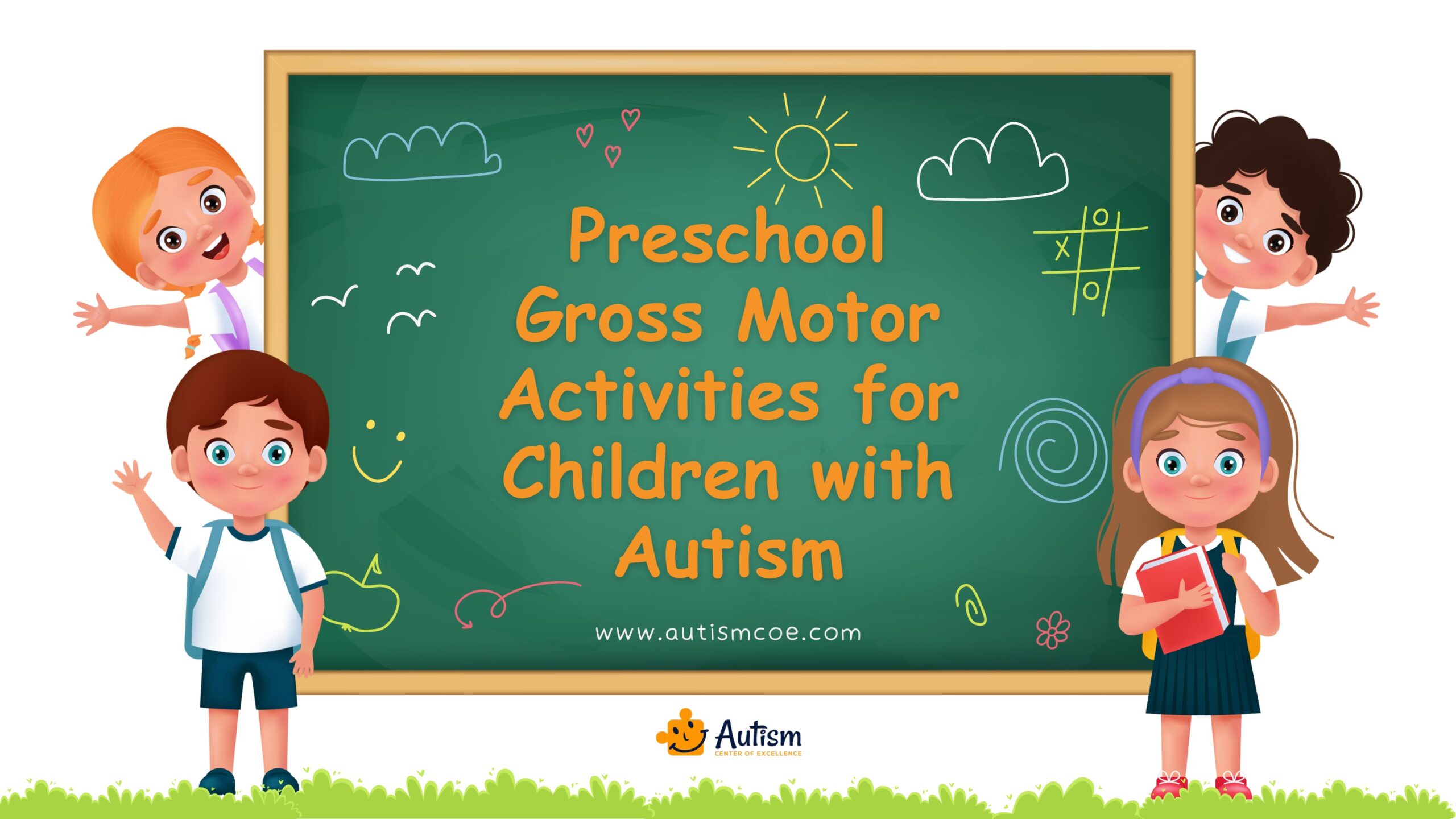
When looking at preschool children, do you observe them jumping and climbing or running swiftly across playground areas? Gross motor skills describe the powerful physical activities that assist children’s physical growth and developmental progression. The involvement of gross motor activities proves advantageous for autistic children because it builds their muscle strength, balance abilities, and coordination functions and promotes interaction with others. Unlike Fine Motor Skills, which involve more precise movements like picking up small objects, gross motor activities focus on the entire body, encouraging healthy development and boosting confidence.
Gross motor activities serve as an excellent way for children with ASD to obtain sensory stimulation while providing organized learning opportunities that are also enjoyable. This blog highlights exciting indoor and outdoor activities, tools, and toys that are perfect for supporting gross motor skills in preschoolers.
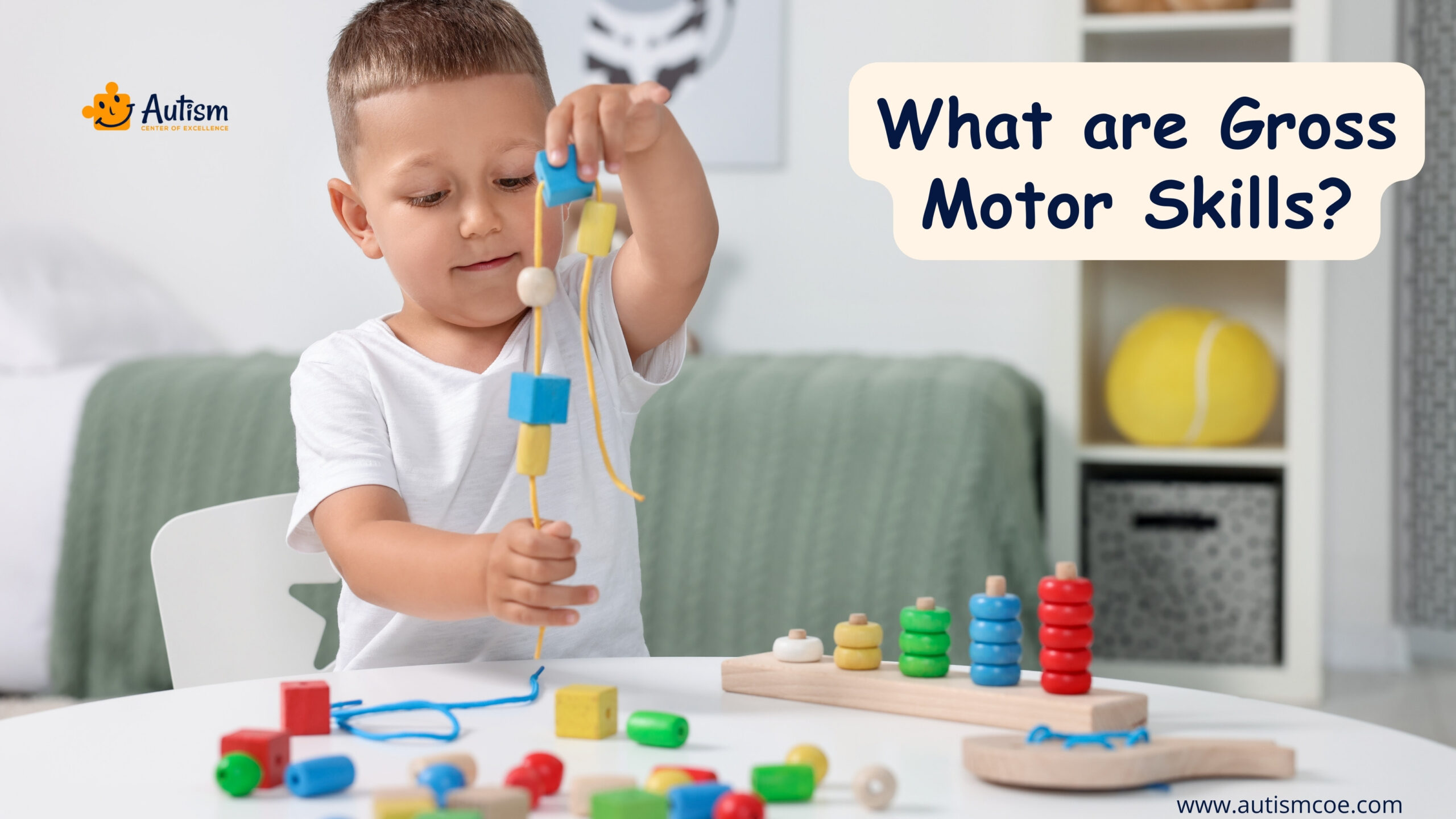
What are Gross Motor Skills?
Activities such as running, jumping, climbing, and balancing are gross motor skills, which are bigger muscle groups. These skills rely on the major muscles of the arms, legs, and core. Improving physical strength, Sensory Processing, body awareness, and coordination in building these movements is important. Gross motor skills are often developed through activities that include structure combined with play to facilitate learning and growth.
What is the difference between gross motor skills and fine motor skills? It’s simple. Fine motor skills come down to small, precise hand and finger movements. Gross motor skills are full-body actions like leaping or swinging on monkey bars, for example, kicking a ball, crawling through a tunnel obstacle course, or jumping on one leg; all help to develop your child’s body and the muscles required for crucial abilities.
Why Do Gross Motor Activities Matter for Preschoolers with Autism?
Gross motor activities enhance coordination and balance in preschoolers with autism, increasing muscle strength and confidence and decreasing anxiety. Parents develop sensory processing, spatial awareness, and social connections through play courses, such as activities like dancing, climbing, and crawling. Indoor and outdoor play combo aims to allow your child to achieve milestones in a fun, movement-based learning manner.
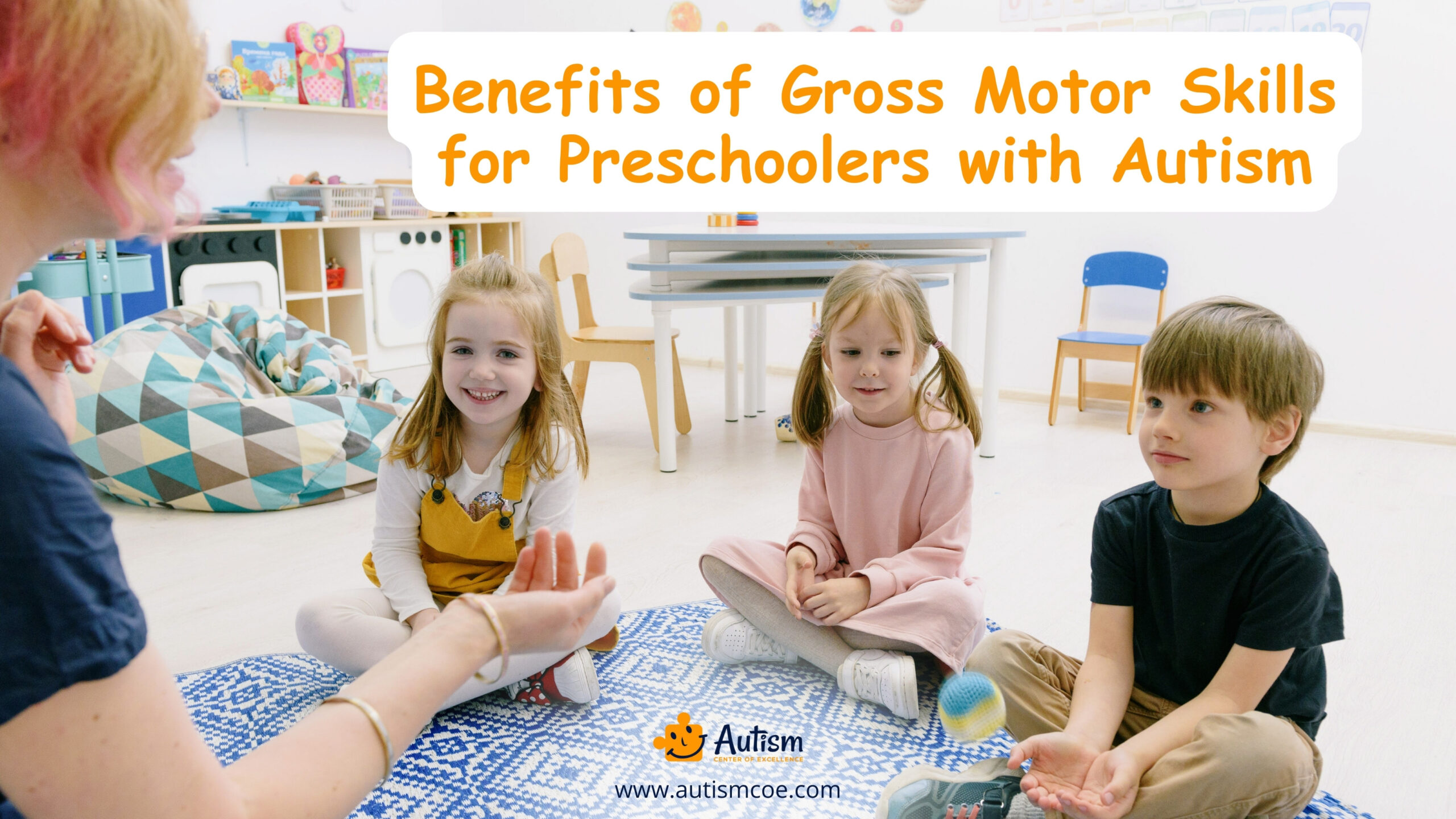
Benefits of Gross Motor Activities for Preschoolers
Gross motor activities aren’t just play; they’re essential for preschoolers’ growth, especially those with autism. They promote physical, social, and emotional development, helping kids build strength, and confidence, and better engage with the world. Here’s a closer look at why these motor skills activities are so important for preschoolers:
1️⃣ Building Strength and Coordination
Jumping, running, and climbing are some activities that will help develop bigger muscle groups in the legs, arms, and core. These help coordination by making the connection between the brain and body stronger. Balancing on one foot or tossing a ball helps with hand-body coordination, physical strength, and motor planning.
2️⃣ Boosting Balance and Flexibility
Activities like hopscotch and crawling through obstacle courses all help build the balance and flexibility that can be challenging for children. Crawling under chairs stretches the body’s capacity to coordinate its effort and extends a child’s ability to adapt to future challenges.
3️⃣ Promoting Social Skills and Teamwork
Relay races, obstacle courses, and tag are interactive activities that encourage social interaction. Taking turns, playing together, and working as a team helps build social connections and give kids opportunities to practice these skills. For children with autism, these activities create a fun and structured environment where they can improve communication and collaboration with their peers.
4️⃣ Supporting Cognitive and Emotional Growth
Brain development is also supported by gross motor play. Climbing or obstacle courses force children to use logical reasoning, problem-solving, and strategic thinking. These activities turn the energy, reduce anxiety, and elevate the mood. Tackling a task or acquiring a new and unknown skill builds self-esteem among children and gives them confidence.
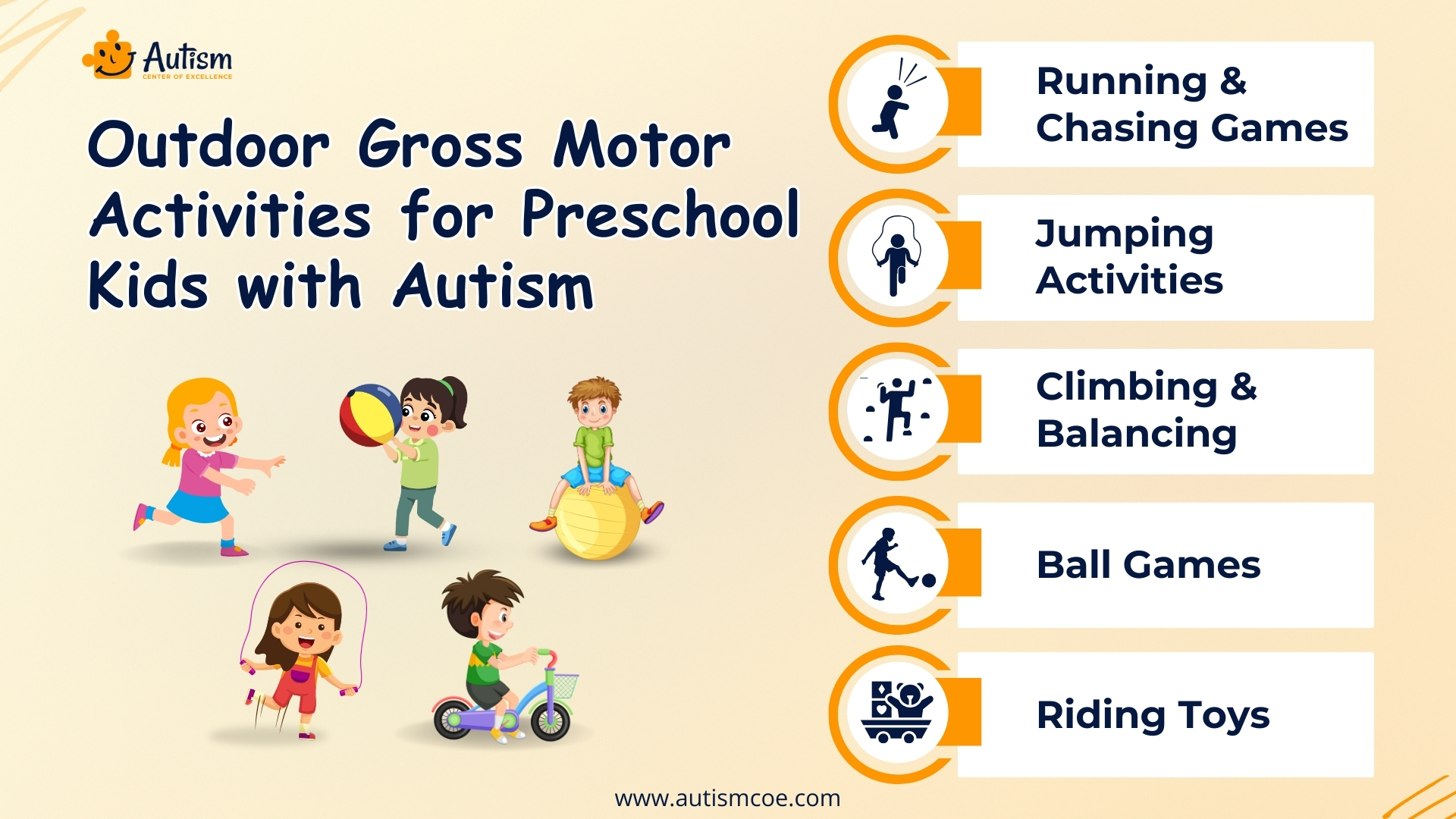
Outdoor Gross Motor Activities for Preschoolers with Autism
Preschoolers need the opportunity to run, climb, explore, and connect with their environment; it is the best way to release energy and develop movement skills. These activities can have a key role to play in sustaining their physical, social, and sensory development. Most of the ideas provided below are engaging (and activity-based) and very suitable for children with autism spectrum.
Running and Chasing Games
Some games for outdoor fun include tag, relay races, or gentle sweeping with brooms. These activities are good for running, stopping, turning, or changing direction, where children develop strength, speed, and coordination. It also makes them practice following simple rules in a certain manner and how to practice active social play while they laugh and have fun.
Jumping Activities
Jumping is an excellent way to gain strength, coordination, and balance. Hopscotch or using a small trampoline is a dynamic sensory input and encourages important gross motor skills. Kids can build confidence by breaking down activities, such as jumping into smaller, more achievable steps. And in addition, these activities are just plain fun, one hop at a time!
Climbing and Balancing
Climbing structures and balancing challenges for preschoolers and outdoor opportunities for developing motor skills are inspiring. Along with providing climbing opportunities, jungle gyms, obstacle courses, or stepping stones can help develop your strength, balance, and problem-solving skills. However, the same activities also provide kids with autism a chance to exercise creativity and work on body awareness and spatial understanding.
Ball Games
Playing with balls (kicking, throwing, or catching) helps with hand-eye coordination, motor planning, and teamwork. A few simple games, such as passing a ball with a friend or a modification of soccer, can be enjoyed by everyone. Still, they also create moments of social interaction and play cooperatively. The advantages of such activities are that they are physically engaging and allow Preschool Children with Autism to build connections with peers in a structured but fun environment.
Riding Toys
To build core strength, balance, and coordination, balance bikes, scooters, or toy rides on cars are good choices. These toys will help children later Develop Skills, such as bike riding. Sensory input and spatial awareness can be obtained through riding toys, and they can be a great way to experience calming and energizing movement.
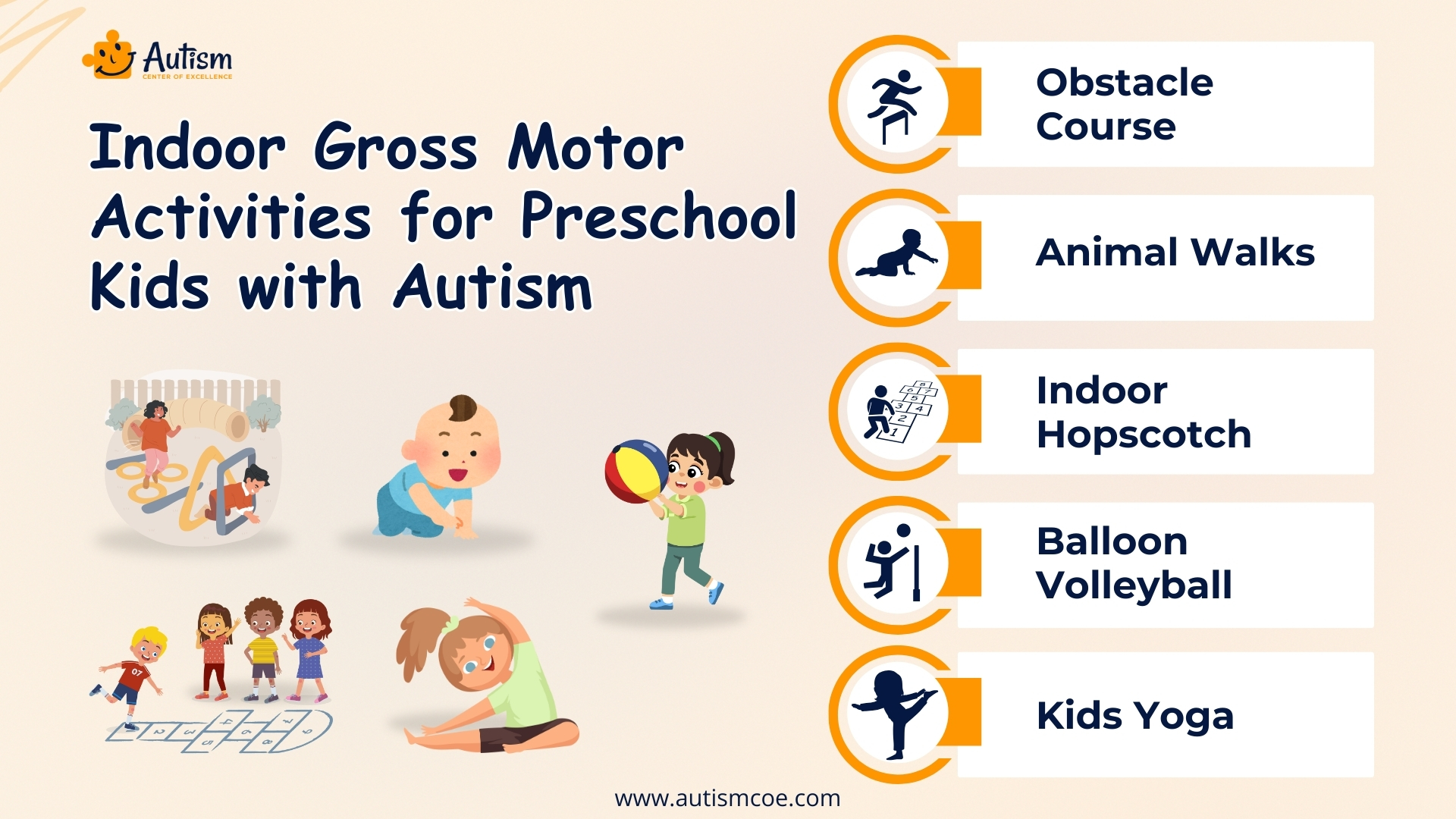
Indoor Gross Motor Activities for Preschoolers with Autism
Preschoolers with autism can stay active and engaged even when being indoors through creative and purposeful gross motor activities. With these fun ideas, you have provided them with an excellent way to enjoy their physical, sensory, and Emotional Development—all while they are moving and having fun.
Obstacle Courses Using Household Items
Use pillows, chairs, broomsticks, or other objects to set up an obstacle course in your house. Preschoolers can crawl under a table, jump over cushions, or wobble along a ‘beam’ of painter’s tape. Not only do such activities increase muscle strength and coordination, but they can also enhance creativity and problem-solving skills as kids go through and complete the course.
Animal Walks
Immerse your living room in the animal kingdom! Bear crawling, frog hopping, and crab scuttling are all actions that preschoolers adore. These animal walks are a wonderful way to work on core muscles and body coordination and give sensory input. This is a fun and imaginative way to encourage kids to be active and develop gross motor skills as they work on it.
Indoor Hopscotch Using Tape
Creating hopscotch for an indoor game is easy; you only need a roll of painter’s tape. The squares are perfect for kids to jump through to practice balance and coordination while working off excess energy. Setting up and cleaning up this activity is simple and can be a good way to get children involved with gross motor play.
Balloon Volleyball or Toss
Balloons blown up are great, safe indoor play tools. Try starting a balloon volleyball game so kids (and adults!) can toss, throw, or catch the balloon, not let it touch the ground. These activities promote hand-eye coordination and teamwork and offer sensory stimulation complemented with a lot of fun.
Yoga and Stretching for Kids
A preschooler benefits from simple yoga poses and stretches. Flexibility and balance can be improved by trying poses such as the “tree” or “cat-cow.” These activities also support emotional development by promoting focus, decreasing stress, and creating a calm feeling. Making the experience safe and engaged is possible by tailoring poses for each child’s abilities.
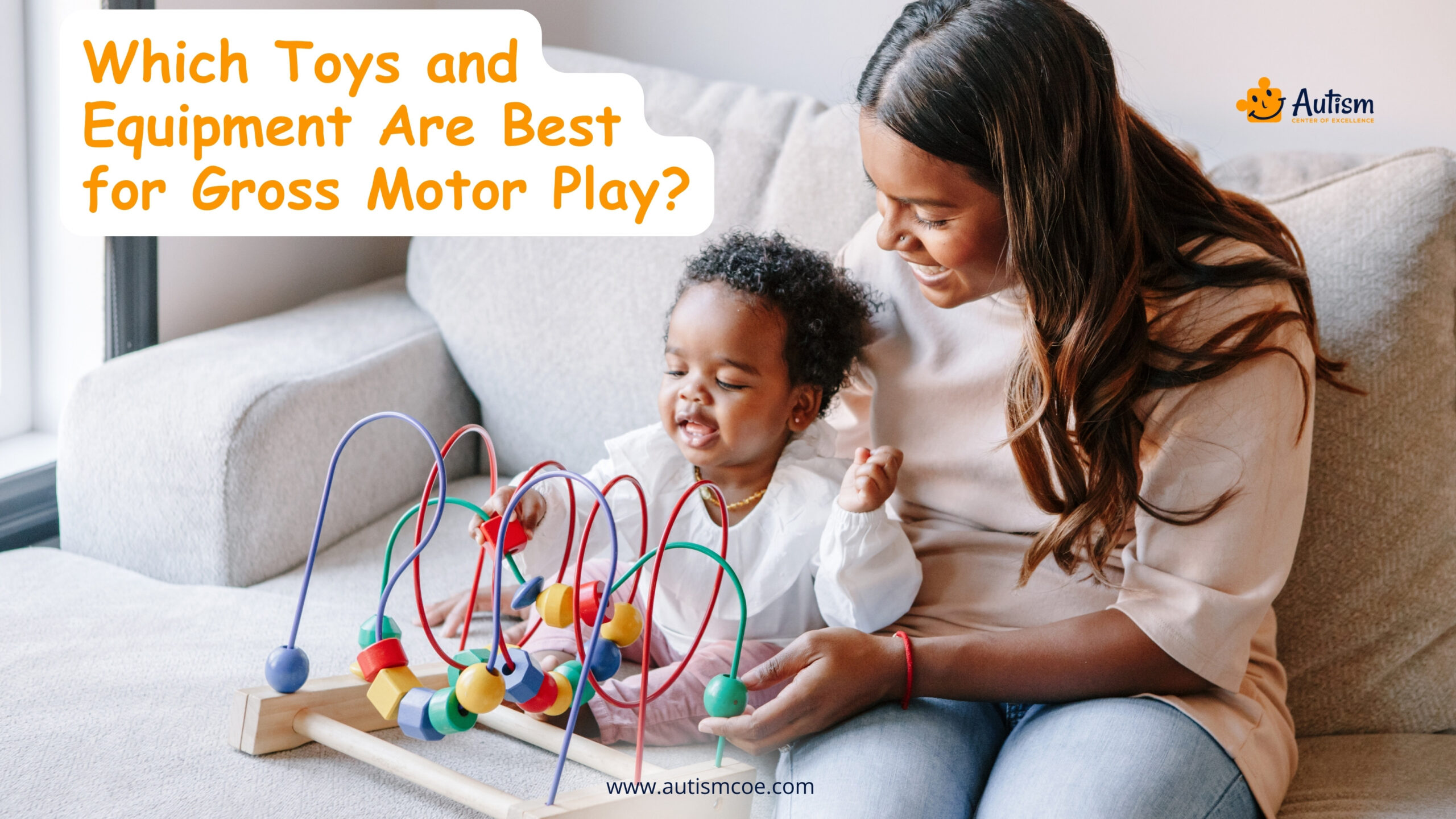
Play Equipment and Toys to Develop Gross Motor Skills
In gross motor activities for preschoolers with autism, the right gear can make all the difference. Equipment and toys should be thoughtfully chosen, and support for their physical, sensory, and developing needs must be provided for meaningful playtime. These are some top outdoor play equipment, our toys, and budget-friendly DIY ideas to inspire active and fun gross motor play.
1️⃣ Best Outdoor Play Equipment
Great for movement and developing key skills, swing sets, slides, and climbing structures encourage kids to use the whole body. These essentials in a sensory-rich environment promote muscle strength, balance, and coordination. Outdoor play is soothing stimulation, energetic activity, and inquiry.
2️⃣ Top Indoor Gross Motor Toys
Need a lifesaver when bad weather keeps your child indoors? Toys like balance boards play tunnels, and foam blocks can be just what you need. These toys help with stability, crawling, and creative play and support gross motor development. They give activities in a structured, sensory-rich way in a safe space.
3️⃣ Affordable DIY Equipment Ideas
Gross motor play can be made of everyday household items. Line the floor with a balance beam taped down, create pillow obstacle courses, or have children hopping between stable household objects to serve as stepping stones. Budget-friendly, you can still tailor activities, bringing fun and creativity to play.
Enjoying Reading?
Join Our Weekly Newsletters!
Subscribe now to stay updated with our latest email updates.
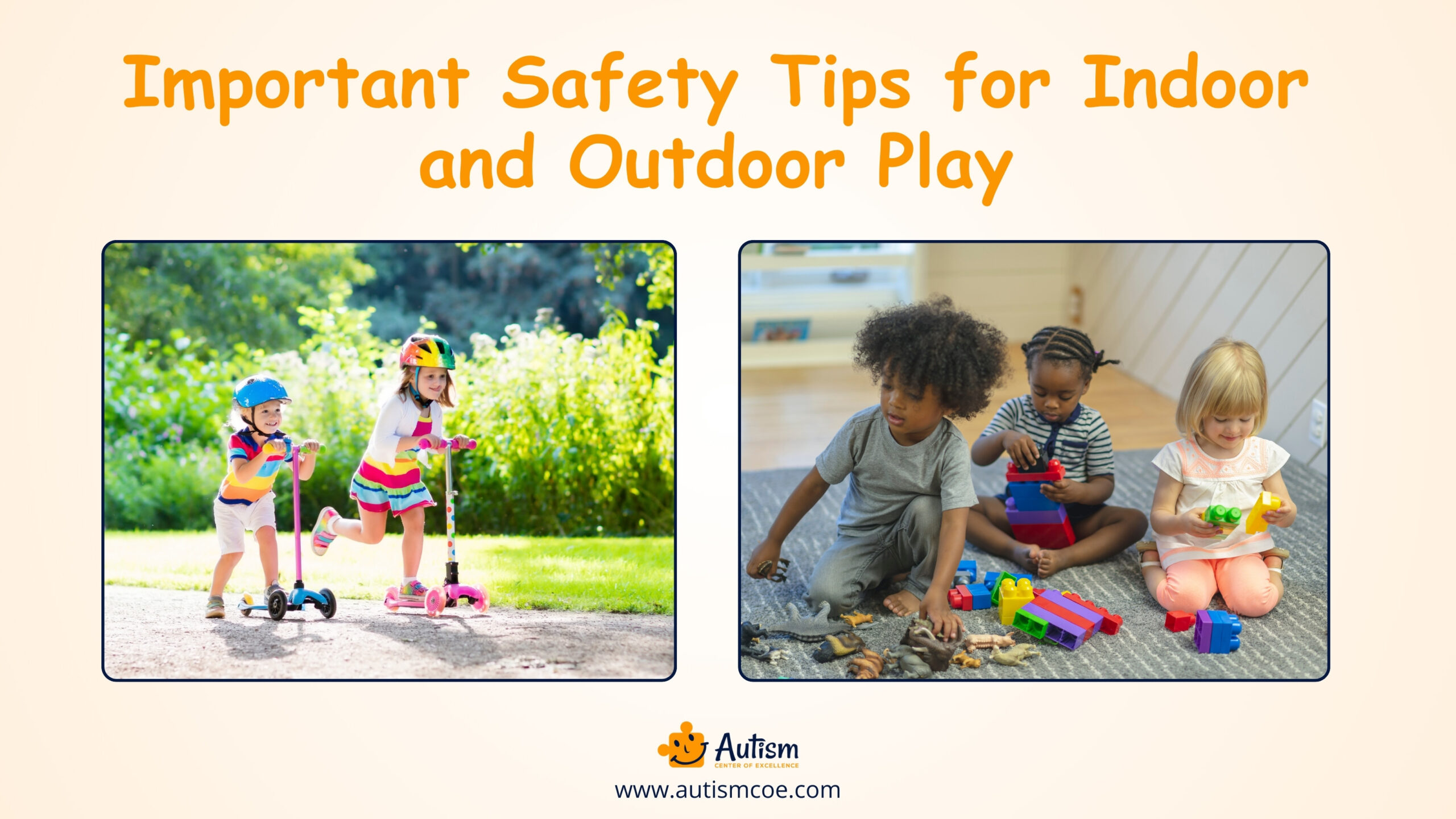
Safety Considerations for Indoor and Outdoor Play
Ensuring safety during play is essential, especially for children with autism, to create a positive and engaging experience. Supervision is key, particularly for younger children, as it allows caregivers to intervene when needed and build stronger bonds.
Use age-appropriate, sensory-friendly equipment that supports their developmental needs, and ensure that both indoor and outdoor play areas are free from hazards like sharp objects or slippery surfaces.
Allowing children to develop independence and Social Skills through teaching safe play habits, like using toys and sharing, will help reduce injury occurrences.
Frequently Asked Questions & Answer
Is Clapping a Gross Motor Skill?
Yes, clapping is a gross motor skill with arm and hand coordination, showing improved strength and rhythm.
What Are Red Flags for Gross Motor Delays?
Red flags include trouble sitting, crawling, or walking by certain ages, poor balance, or stiff/floppy muscles. Consult a pediatrician if concerned.
Does Gross Motor Delay Mean Autism?
No, gross motor delays can have many causes. While motor challenges may appear in autism, delays alone don’t confirm it.
What is the Difference Between Gross Motor and Fine Motor?
Gross motor skills involve big movements like running, while fine motor skills focus on small actions like gripping or writing.
Conclusion
Gross motor activities highly support the physical, sensory, and overall developmental growth of children with autism. Climbing, jumping, or crawling strengthens, coordinates, and boosts confidence and sensory exploration. These moments of play nourish their minds and bodies and encourage thriving in a fun and engaging way.
Parents, educators, and caregivers should incorporate various structured activities and free play into daily routines to reap the most benefits and forge the strongest possible connections. Autism Center of Excellence provides specialized Autism Therapy to support children and their families through resources to encourage growth and development. Encourage celebration of every milestone with hearty congratulations and be proud of their accomplishments!
Please Note: The content of this blog is for informational purposes only and should not be considered a substitute for professional medical advice, diagnosis, or treatment. Consult a qualified healthcare professional for personalized guidance tailored to your specific situation.

Bhavika Bhasin
Bhavika Bhasin is the Research and Marketing officer at AutismCOE. She works with children and adults with ASD. Her clinical research includes evaluating various available autism screening and diagnosis methods and their efficacy. She is currently developing a novel screening exam that is indicated to be more accurate than the existing available exams. She is also writes articles papers for various publications.

